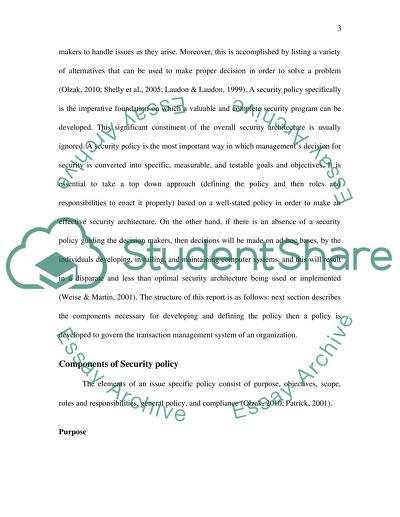Cite this document
(“Developing security policy (Security, Ethics and Electronic Commerce Essay”, n.d.)
Developing security policy (Security, Ethics and Electronic Commerce Essay. Retrieved from https://studentshare.org/miscellaneous/1568877-developing-security-policy-security-ethics-and-electronic-commerce-systems
Developing security policy (Security, Ethics and Electronic Commerce Essay. Retrieved from https://studentshare.org/miscellaneous/1568877-developing-security-policy-security-ethics-and-electronic-commerce-systems
(Developing Security Policy (Security, Ethics and Electronic Commerce Essay)
Developing Security Policy (Security, Ethics and Electronic Commerce Essay. https://studentshare.org/miscellaneous/1568877-developing-security-policy-security-ethics-and-electronic-commerce-systems.
Developing Security Policy (Security, Ethics and Electronic Commerce Essay. https://studentshare.org/miscellaneous/1568877-developing-security-policy-security-ethics-and-electronic-commerce-systems.
“Developing Security Policy (Security, Ethics and Electronic Commerce Essay”, n.d. https://studentshare.org/miscellaneous/1568877-developing-security-policy-security-ethics-and-electronic-commerce-systems.


